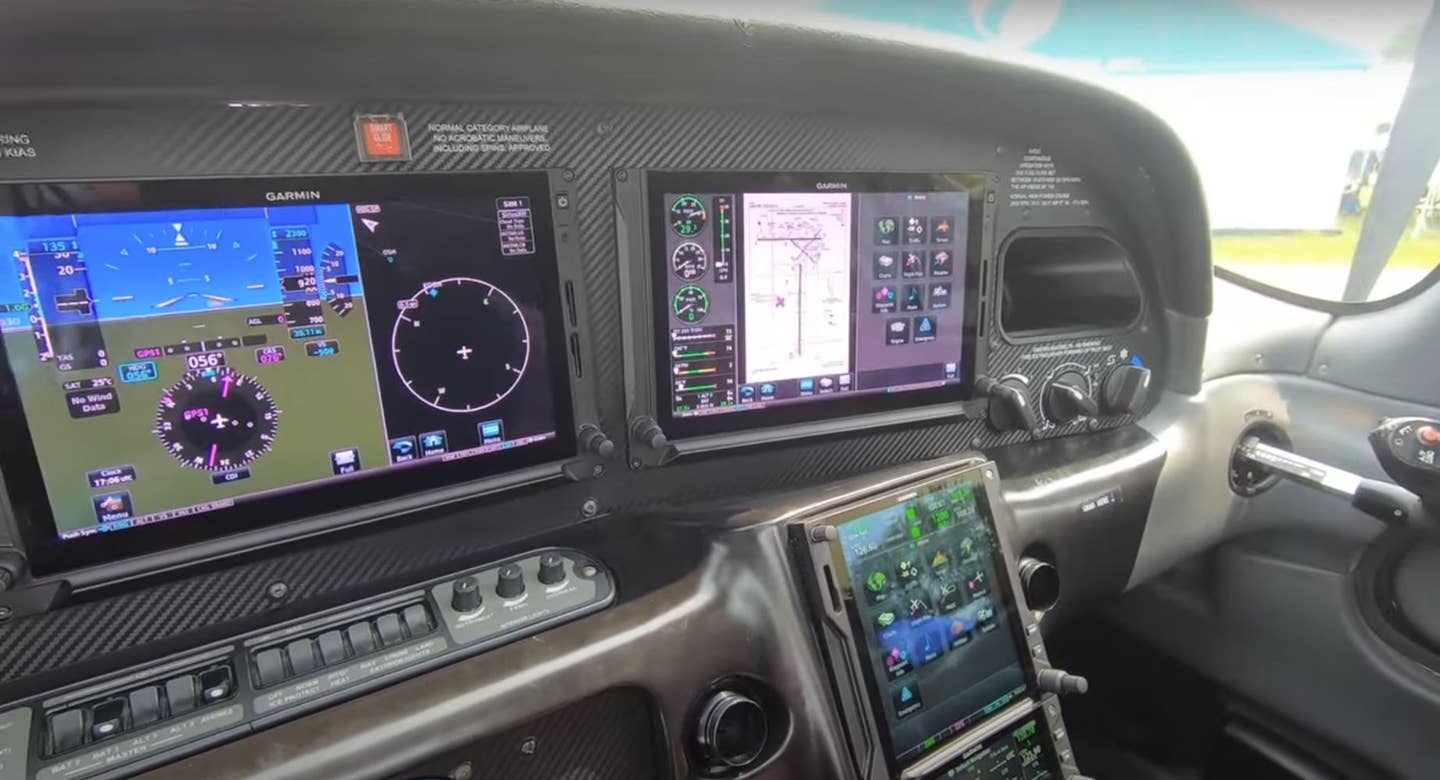Aspen Avionics Announces Autopilot Compatibility With Evolution Series
Owners can enable its flight display series as a replacement in the panel.

For owners installing the Evolution 2000 Max or 2500 Max systems, the vacuum-driven instrument(s) can be removed, as well as the turn and bank, altimeter, and airspeed indicator. [Courtesy: Aspen Avionics]
On Tuesday at EAA AirVenture, Aspen Avionics announced the integration of its Evolution flight display series with the Garmin GFC 600 autopilot. The avionics manufacturer also outlined the recent approval to use its Evolution series as a complete replacement for traditional instruments in the panel.
With the latest software release (v2.12), those aircraft owners who have the GFC 600 installed in their airplanes can couple the digital autopilot to their primary flight display (PFD) and enjoy a more streamlined operation. The update is intended to lower pilot workload and enhance the safety of single-pilot IFR.
The software update gives the pilot the following:
- the ability to select altitude, vertical speed and airspeed on either the PFD or the GFC 600 panel;
- flight director capability for coupled autopilot operation;
- a fully digital interface that eliminates the need for adapter boxes;
- extended runway centerlines on the multifunction display’s moving map;
- selected altitude/airspeed output for Trio autopilots;
- improved auto brightness levels based upon customer feedback.
The GFC 600 software update pricing is $1,995.
No Backup Required
Aspen also promoted the fact that owners upgrading with the Evolution series may also gain the ability to remove traditional instrument systems previously required as a backup to the glass-panel displays. For most Evolution Pro Max PFD or E5 systems, the FAA now allows for the removal of the attitude indicator—and potentially its associated vacuum system—while retaining the turn and bank, altimeter, and airspeed indicators as the needed backups to the PFD.
For owners installing the Evolution 2000 Max or 2500 Max systems, the vacuum-driven instrument(s) can be removed, as well as the turn and bank, altimeter, and airspeed indicator, completely streamlining the panel.
John Uczekaj, Aspen Avionics president and COO, related his assessment of the move, going back to the early days of installing glass panel displays in general aviation airplanes, when the FAA “was not as comfortable” with the idea of relying upon the then-new electronic instruments. “That created a lot of questions by our customers, why that’s necessary,” when the pilot was relying before on a single mechanical instrument—the vacuum driven attitude indicator—that was itself notoriously unreliable.
“Over time, the reliability of these displays and the FAA’s march towards safety-enhancing equipment” eased the situation to bring the industry to this point where an electronic EFIS is recognized as the more reliable—and data-rich—choice, he said.
“For our consumer base, it eliminates one of the most unreliable things in their airplanes,” Uczekaj said.
AirVenture Base
At Oshkosh, Aspen Avionics sponsors a base in the North 40 campground, offering an air-conditioned lounge and refreshments for the wide range of its 14,000-plus customers who fly into the show each year. “We’re the most consumer-based company in certified avionics,” said Uczekaj, and the effort at AirVenture keeps the company close to that base.

Subscribe to Our Newsletter
Get the latest FLYING stories delivered directly to your inbox






